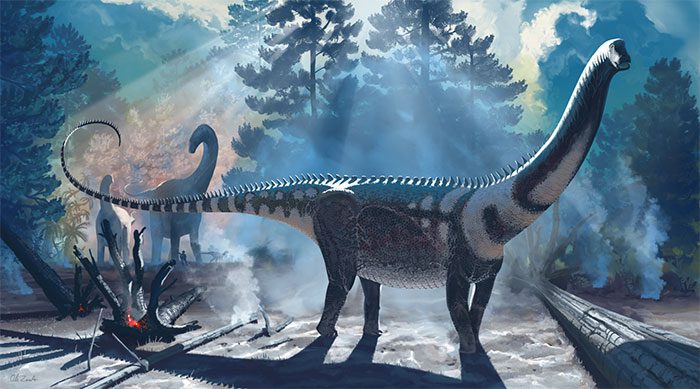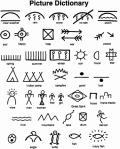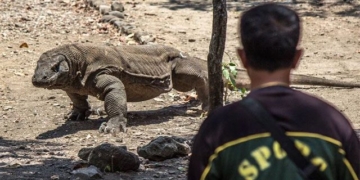A New Species, Ardetosaurus viator, Belongs to the Lineage of the Longest Creatures Ever to Walk the Planet.
According to Sci-News, fossilized bone fragments of a mysterious creature unearthed over 30 years ago from the Howe-Stephens Quarry in the Morrison Formation, northern Wyoming (USA), have finally been successfully classified.

Newly unearthed creature in the USA – (Graphic by: Ole Zant).
The research team, led by paleontologist Tom van der Linden from Oertijdmuseum (a natural history museum in the Netherlands), has named it Ardetosaurus viator, a completely new species of sauropod.
Sauropods, belonging to the superfamily Diplodocoidea, are a branch of the dinosaur clade Saurischia, which includes some of the longest animals ever to walk the Earth.
They are characterized by long necks, long tails, and robust bodies supported by four pillar-like legs.
Compared to other sauropods, the body shape of Ardetosaurus viator is somewhat “slimmer,” with a notably long neck and tail.
This group is known to have inhabited North and South America, Europe, and Africa, existing from 161 to 135 million years ago.
The newly revealed creature from the USA is approximately 150 million years old, living during the middle Jurassic period.
Ardetosaurus viator is also the first anatomically mature sauropod specimen described from the Howe-Stephens Quarry, where several of its relatives have also been discovered.
This specimen displays several transitional features in the bones of the neck, back, and tail vertebrae, providing evidence that it was gradually evolving morphologically to better adapt to its environment.
It adds to the data suggesting how rapidly and diversely the giant sauropod family evolved to become one of the most prolific groups of dinosaurs in the subsequent Cretaceous period.
The study on this new creature has just been published in the scientific journal Palaeontologia Electronica.





















































